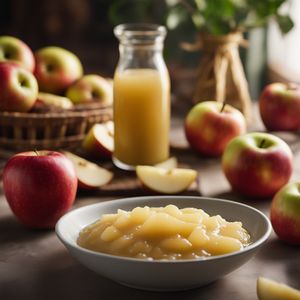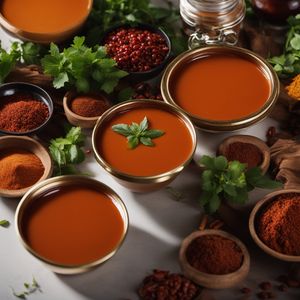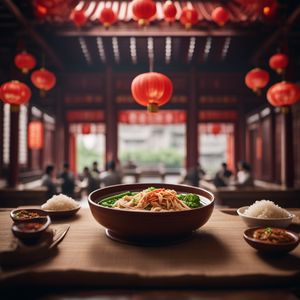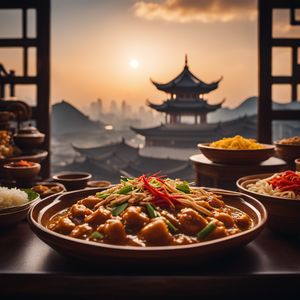
Dish
Nanpie
Nanpie is made by fermenting soybeans with chili peppers and other ingredients for several months. The resulting sauce has a pungent and spicy flavor that pairs well with noodles, dumplings, and other dishes. Nanpie is a staple in Sichuanese cuisine and is often used in dishes such as dan dan noodles and mapo tofu.
Origins and history
Nanpie has its origins in the Sichuan province of China, where it has been a staple condiment for centuries. The sauce is believed to have originated with the ancient Chinese, who used fermented soybeans and other local ingredients to create a variety of sauces and condiments. Today, nanpie is enjoyed throughout China and is a popular condiment in many Chinese restaurants around the world.
Dietary considerations
Nanpie is gluten-free and vegan-friendly. However, it contains soybeans, so it may not be suitable for those with soy allergies.
Variations
There are many variations of nanpie, with different herbs and spices used depending on the region and the cook's personal preferences. Some recipes call for the addition of sesame oil or vinegar to add more flavor, while others use different types of chili peppers or soybeans to vary the texture.
Presentation and garnishing
Nanpie is typically served in a small bowl or ramekin, with a garnish of chopped scallions or cilantro on top. It can also be drizzled over noodles or used as a dipping sauce for dumplings.
Tips & Tricks
To make nanpie, be sure to use high-quality soybeans and chili peppers for the best flavor. You can adjust the spiciness of the sauce by adding more or less chili peppers, depending on your personal preference. If you prefer a smoother sauce, you can blend the ingredients in a blender or food processor before serving.
Side-dishes
Nanpie is often served with noodles, such as dan dan noodles or cold sesame noodles. It can also be used as a condiment for dumplings or as a marinade for meat or tofu.
Drink pairings
Nanpie pairs well with a variety of drinks, including beer, green tea, and rice wine.
Delicious Nanpie recipes
More dishes from this category... Browse all »

Agliata
Italian cuisine

Agrodolce
Italian cuisine

Ajilimójili
Mexican cuisine

Allemande sauce
French cuisine

Almogrote
Canarian cuisine

Ammoghiu
Italian cuisine

Apple Sauce
American cuisine

Awaze Sauce
Ethiopian cuisine




